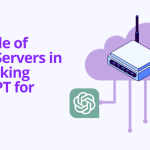Разбор данных, преобразование данных из одного формата в другой, широко используется для структурирования данных, что обычно делается для облегчения понимания существующих, неструктурированных, нечитаемых данных.
Что такое парсинг данных?
Разбор данных - это процесс анализа и извлечения необходимой информации из неструктурированных или полуструктурированных источников данных, являющийся краеугольным камнем современной обработки данных. Он включает в себя разбиение данных на более мелкие компоненты, такие как поля, записи или атрибуты, для идентификации и извлечения конкретных точек данных. Эту структурированную информацию можно хранить, анализировать и использовать в различных целях.
Зачем нужен парсинг данных?
Для эффективного взаимодействия компьютерам часто требуется перевод. Чтобы помочь машинам понять строки данных в текущем формате, который они не распознают или не понимают, используется синтаксический анализ, преобразующий данные в форму, которую устройство может понять и манипулировать ими, что аналогично обеспечению перевода, позволяющего людям понимать текст на другом языке.
Разбор данных - это процесс, который преобразует неструктурированные и неразборчивые строки данных в структурированные и простые коллекции, которые могут быть легко поняты компьютером, что дает множество преимуществ:
- Организация данных: Преобразование необработанных или неструктурированных данных в структурированные форматы для упрощения анализа и манипулирования.
- Автоматизация: Упрощает рабочие процессы благодаря автоматическому извлечению и форматированию информации.
- Операционная совместимость: Обеспечивает беспрепятственное взаимодействие систем с различными форматами данных.
- Улучшенное принятие решений: Предоставляет чистые и практичные данные для аналитики и отчетов.
Анализ данных широко используется сегодня в различных отраслях - от финансов и образования до больших данных и электронной коммерции. Эффективный парсер данных позволяет извлекать необходимую информацию из исходных данных без какого-либо ручного вмешательства. Полученные данные могут быть использованы для различных целей, включая маркетинговые исследования, сравнение цен и т.д. Эта технология позволяет компаниям принимать обоснованные решения и получать конкурентные преимущества. Кроме того, анализ данных повышает эффективность работы и снижает затраты за счет автоматизации утомительных задач, что позволяет экономить время и трудовые ресурсы. В условиях жесткой рыночной конкуренции анализ данных становится ключевым фактором корпоративных достижений.
Примеры использования разобранных данных
- Бизнес-аналитика: Интеграция и анализ данных для принятия решений и прогнозирования тенденций.
- Веб-скраппинг: Извлечение данных с веб-сайтов для электронной коммерции, привлечения клиентов и мониторинга СМИ.
- Разработка приложений: Автоматизация ввода данных, работа приложений в режиме реального времени и поддержка машинного обучения.
- Финансовый анализ: Анализ рыночных данных в режиме реального времени для торговли, оценки рисков и выявления мошенничества.
- Маркетинг: Персонализация кампаний, анализ SEO и оценка эффективности рекламы.
- Здравоохранение: Структурирование данных о пациентах, помощь в исследовании лекарств и мониторинг тенденций в области общественного здравоохранения.
- Юриспруденция: Извлечение и систематизация юридических документов для соблюдения требований и проведения исследований.
- Цепочка поставок: Управление запасами, отслеживание поставок и оптимизация маршрутов доставки.
- Образование: Анализ данных о студентах, разбор содержания исследований и подготовка учебных материалов.
- Социальные сети: Анализ настроений, отслеживание тенденций и модерация контента.
- Розничная торговля: Анализ отзывов покупателей, оптимизация программ лояльности и прогнозирование спроса.
- Правительство: Помощь в разработке политики, управление кризисными ситуациями и обеспечение прозрачности.
Как работает парсинг данных?
Разбор данных обычно включает следующие этапы:
-
Входная идентификация
Чтение необработанных данных из файлов, API или веб-страниц.
-
Токенизация
Разбиение данных на более мелкие элементы - слова, символы или числа.
-
Синтаксический анализ
Проверка структуры или формата на соответствие предопределенным правилам (например, схемам XML, JSON).
-
Извлечение данных
Поиск релевантной информации на основе контекста.
-
Преобразование выходного сигнала
Форматирование извлеченных данных в нужные структуры, такие как таблицы, списки или объекты.
Недостатки парсинга данных
При разборе данных обычно приходится иметь дело с исходными данными, которые могут быть сырыми, неструктурированными или полуструктурированными. Эти данные могут поступать из различных источников, таких как датчики, файлы журналов, базы данных или веб-страницы. Поскольку источники данных могут быть разными, формат и качество данных также могут отличаться друг от друга. Однако даже после очистки и преобразования входные данные все равно могут содержать неточности, ошибки и несоответствия.
Для одновременной обработки нескольких входных документов и экономии времени можно прибегнуть к методам распараллеливания обработки данных. Однако такой подход может привести к увеличению потребления ресурсов и общей сложности. Поэтому для эффективного разбора больших данных необходимо использовать современные инструменты и методики.
Популярные форматы парсинга данных
- JSON (JavaScript Object Notation): Легкий и человекочитаемый формат, широко используемый в API.
- XML (eXtensible Markup Language): Гибкий формат для обмена структурированными данными.
- CSV (значения, разделенные запятыми): Обычно используется для хранения табличных данных и задач импорта/экспорта.
- HTML: Необходим для разбора содержимого веб-страниц во время веб-скрапинга.
Методы разбора данных
- Регулярные выражения (Regex): Идеально подходит для извлечения простых текстов, но не обладает достаточной масштабируемостью для сложных структур.
- Парсинг DOM: Используется для навигации и извлечения структурированных документов HTML или XML.
- Событийно-управляемый синтаксический анализ: Подходит для больших наборов данных; обрабатывает входные данные как события (например, SAX для XML).
- Библиотеки и фреймворки: Такие языки программирования, как Python, Java или PHP, предлагают надежные библиотеки для синтаксического анализа.
Популярные инструменты для парсинга данных
| Инструмент | Лучшее для | Язык |
|---|---|---|
| BeautifulSoup | Веб-скрепинг и разбор HTML/XML | Python |
| JSON.parse() | Разбор JSON в JavaScript | JavaScript |
| Панды | Работа с табличными данными (например, CSV, Excel). | Python |
| Xml.etree | Разбор XML | Python |
| Cheerio.js | Веб-скрепинг в средах Node.js | JavaScript |
| Gson | Разбор JSON для приложений Android/Java | Java |
Реальные применения парсинга данных
- Веб-скрапинг: Извлечение цен на товары, обзоров или заголовков с веб-сайтов.
- Интеграция данных: Консолидация информации из нескольких источников в единый формат.
- Анализ журналов: Разбор журналов сервера для мониторинга активности, обнаружения ошибок или отслеживания поведения пользователей.
- Обработка естественного языка (NLP): Токенизация и анализ текста для анализа настроения, перевода или обобщения.
- Преобразование файлов: Преобразование таких форматов, как JSON в CSV, для совместимости с базами данных или инструментами аналитики.
Проблемы, связанные с разбором данных
Работа с неструктурированными данными
Разбор текста произвольной формы или непоследовательного ввода.
Вопросы производительности
Эффективная обработка больших массивов данных без чрезмерного расхода ресурсов.
Проверка достоверности данных
Обеспечение соответствия разобранных данных ожидаемым схемам.
Динамический контент
Адаптация к часто меняющимся форматам, особенно на веб-сайтах.
Заключение
Разбор данных - это важный процесс извлечения структурированной информации из неструктурированных или полуструктурированных источников данных. Разбор данных позволяет повысить качество данных, улучшить их анализ и автоматизировать процессы. Разбор данных применяется в различных отраслях, включая веб-скрепинг, обработку документов, интеграцию данных и обработку естественного языка. При веб-скреппинге или работе с динамическим контентом с помощью прокси-серверов надежные прокси-сервисы позволяют повысить производительность, обходя гео-ограничения и обеспечивая беспрепятственный доступ к веб-сайтам с большим объемом данных. Поэтому, OkeyProxy считается надежным поставщиком для пользователей, помогающим решать задачи веб-скрапинга. Применение методов парсинга данных позволяет организациям раскрыть потенциал структурированной информации, обеспечивая принятие обоснованных решений, повышение эффективности и конкурентное преимущество в мире, управляемом данными.

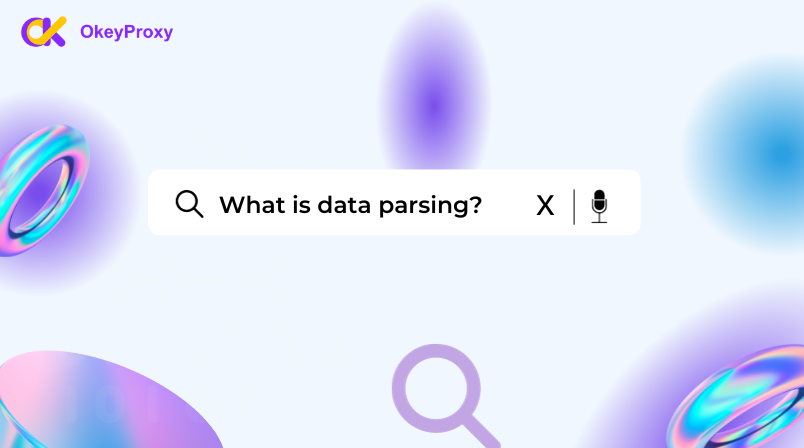


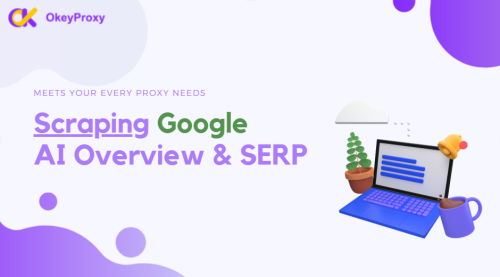
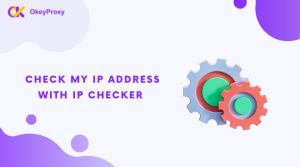
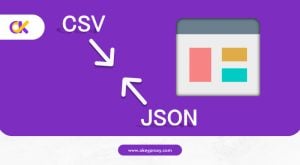
![Как выскрести аккаунты пользователей в Instagram и TikTok [Python и API] как вычислить аккаунты пользователей в instagram и tiktok](https://www.okeyproxy.com/wp-content/uploads/2024/08/scrape-user-accounts-ig-tiktok-300x167.jpg)
